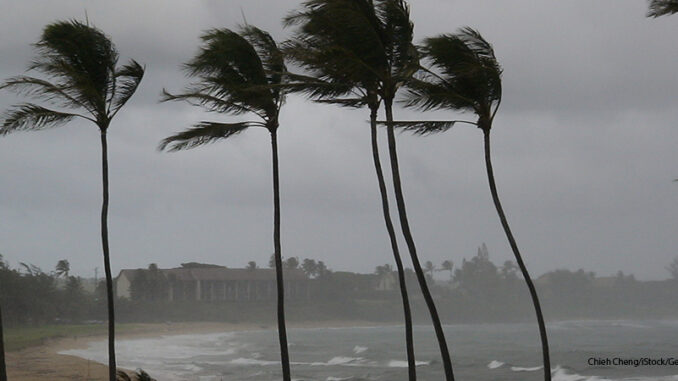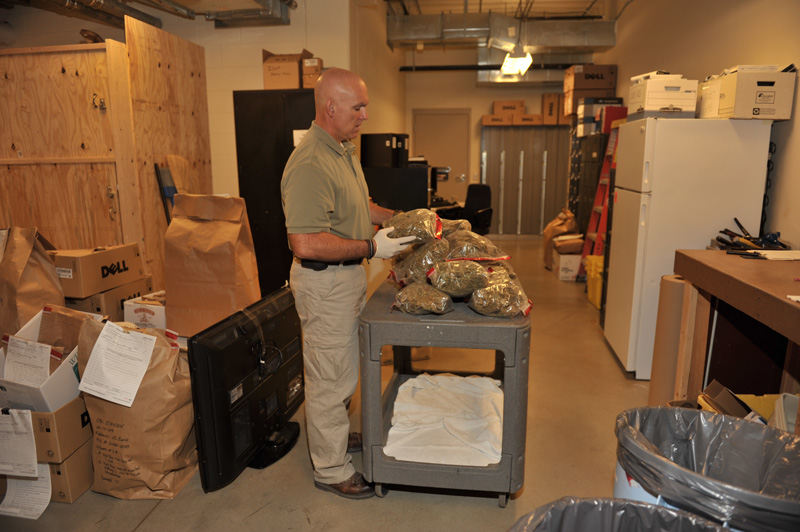
Voter Controversy in Georgia
A new development in the hotly-contested Georgia governor’s race has led to accusations of voter suppression. To review: in November, Brian Kemp, the Republican secretary of state, will face off against Stacey Abrams, the Democratic former state House minority leader. If Abrams wins, she will become the first black governor in the state’s history.
The recent scandal occurred in Randolph County, Georgia: a rural county in the southern part of the state. Earlier this year, the county hired an independent election consultant named Mike Malone to help manage elections after the county elections superintendent resigned. As part of his plan, Malone proposed eliminating seven out of nine of the county’s polling places.
According to Malone, this change was necessary because these seven polling places either weren’t used often enough or didn’t meet disability access standards required by the Americans with Disabilities Act (ADA). But civil liberties groups responded to this with accusations of voter suppression, pointing out that now voters would be required to travel long distances in order to vote. They argue this is a violation of the Fourteenth Amendment’s right of due process.
The county board of elections unanimously rejected the plan. Last week, the county attorney also sent a letter to Malone, canceling their contract with him. But that action may not go far enough. According to Malone, his plan to close polls came highly recommended by the secretary of state’s office–the office that Republican gubernatorial candidate Brian Kemp heads up. Kemp claims that he did not support the plan, and even wrote a letter to the board of elections encouraging them to vote against it. Nevertheless, Democrats are calling for Kemp to step down in order to ensure a fair election.
What Do You Think? Was this really a situation where voters were going to be unfairly impacted? Or do you think this was a media controversy that was not a real problem? Explain your thoughts and compare them to other classmates. Are you in agreement? If not, try to determine the source of the disagreement between yourself and others.
Hurricane Lane Pummels Hawaii
You probably remember the breathtaking pictures on the news when Hawaii’s Mt. Kilauea erupted back in May of this year. Last weekend, Hawaiians faced a new natural disaster: Hurricane Lane.
Lane was originally a Category 3 hurricane that was downgraded to a tropical storm just before it hit the islands. Even so, the fact that it was a slow-moving storm meant that it dropped a lot of rain on Hawaii. Though Kauai faced heavy rainfall, the Big Island bore the brunt of the storm. Over the course of five days, the Big Island received over fifty inches of rain along its eastern half. This is the third highest amount from any tropical storm to hit the United States since record-keeping began in 1950. Significant flooding on the Big Island caused widespread evacuations and water rescues. Still, the results could have been much deadlier if Lane had remained a full-strength hurricane when it hit the state.
It is rare for large hurricanes to directly hit the Hawaiian islands. This is because they are so tiny compared to the large overall size of the Pacific Ocean. Cooler water temperatures and wind shear (a quick change in wind velocity or direction) surrounding the islands also help protect Hawaii by weakening approaching storms. The last large hurricane to hit the state was Hurricane Iniki in 1992, which killed six people on the island of Kauai, caused about $3 billion in damage, cut power lines, and destroyed crops.
Dig Deeper While the eastern half of the Big Island received record-breaking rainfall, the western half received only a few inches. Why? Use internet resources, as well as your own knowledge of weather and geography, to determine your answer.
Animal Crackers Roam Free
When you think of animal crackers, do you picture the little red-and-yellow box with the pictures of the circus animals in cages on the front? Probably yes. But now, this iconic box is undergoing a change that many animal-rights activists are excited about. Nabisco, the company that makes Barnum’s Animal Crackers, has decided that they will no longer show the animals in cages. Instead, the new design will picture the animals walking free in the wild.
Although many brands of animal crackers exist, Nabisco’s was the only brand that portrayed animals in cages. This traditional box has existed for 116 years. But the company feels that now is an important time to make a change, which was first suggested by People for the Ethical Treatment of Animals (PETA), as people become more aware than ever of the importance of animal rights issues. In fact, the Ringling Bros. and Barnum & Bailey Circus finally shut down last year as ticket sales continued to decline. PETA worked closely with Nabisco on the new box design.
Despite keeping the same iconic box for more than a century, there have been a few times over the years when Nabisco updated the look of the animal crackers box temporarily. For example, in 1995 it created an endangered species series that raised money for the World Wildlife Fund. A similar series in 1997 raised money for the American Zoo and Aquarium Association. The company hopes that the new, updated box will provide a more current look for the product and emphasize the importance of allowing animals to remain in their natural habitats.
The new boxes began arriving in stores across the country last week.
What Do You Think? Updating the look of a box of crackers is only a symbolic change. In your own words, however, explain why this change is important to people who value animal rights.
Will California Erase Marijuana Charges?
You may have heard of California’s Proposition 64. Passed in 2016, it legalized the recreational use of marijuana in that state.
However, many Californians were still left with criminal charges on their record for using the drug before 2016. In fact, from the time Proposition 64 passed until December 2017, more than 4,000 people came forward and petitioned the courts to have their old marijuana-related crimes expunged from their records. And that number is actually much smaller than it should be. Petitioning the courts requires hiring lawyers and paying legal fees, which not everyone can afford to do.

Credit: Aaron Roeth Photography
In response, the California Senate passed a measure last week that would require the state’s Justice Department to automatically review marijuana-related cases dating as far back as 1975 to see if a criminal charge should be revoked. This is an important distinction because it puts the burden of expunging (clearing) records on the state, not on the individual. The bill is currently awaiting signature by California Governor Jerry Brown. If it passes, here’s what will happen: the California Department of Justice will have until July 1, 2019, to identify cases that should be reviewed. The DOJ will then hand these over to the district attorney’s office. The district attorney will then have another year to make a determination.
If the bill becomes law, it’s estimated that more than 218,000 cases may be eligible to be expunged.
